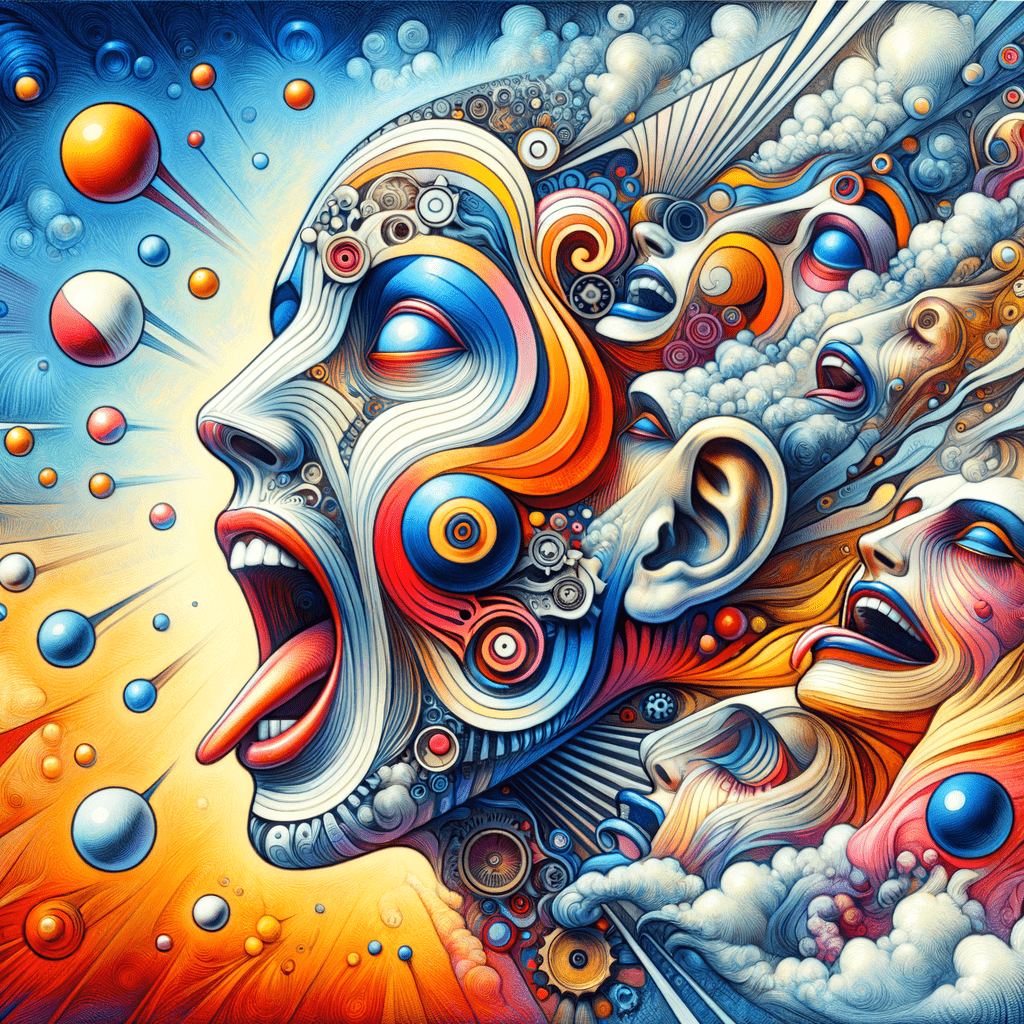Delve into how Dada and Surrealism challenged artistic and social conventions with their irreverent and revolutionary approach, exploring the irrational and the dream.
Discover how the artistic movements of Dada and Surrealism revolutionized the world of art and society by challenging conventions with an irreverent and innovative approach.
The artistic movements of Dada and Surrealism represented a radical break from the artistic and social conventions of their time. Born in a period of great historical and cultural turbulence, these movements explored the irrational, the dream, and the absurd, challenging norms and proposing new visions of the world.
In this article, we will delve into the origins, characteristics, and influence of these revolutionary movements.
- Origin of Dadaism
- Characteristics of Dadaism
- Origin of Surrealism
- Characteristics of Surrealism
- Influence on Society
- Conclusion
Origin of Dadaism
The Dadaism movement was born during World War I, a period of great disillusionment and chaos, which spanned from 1914 to 1918. Founded in Zurich in 1916 by a group of artists and intellectuals, including Tristan Tzara, Hugo Ball, Marcel Janco, Hans Arp, Richard Huelsenbeck, and Sophie Taeuber-Arp, the Dada movement emerged as a radical reaction against the war and the bourgeois society that had made it possible.
Cabaret Voltaire, founded by Hugo Ball and his wife Emmy Hennings, became the nerve center of Dadaist activities. Here, artists and poets gathered to perform provocative acts that mixed poetry, music, dance, and visual art, challenging the artistic and social conventions of the time. Dadaist evenings were characterized by an atmosphere of controlled chaos, where absurdity and nonsense reigned.
The name “Dada” was deliberately chosen for its childlike and nonsensical meaning, reflecting the movement’s anti-rational and anti-establishment attitude. According to one legend, the term was found by randomly opening a French-German dictionary, where “dada” means “rocking horse” in French, emphasizing the playful and irrational element that characterized the movement.
Dadaism rejected logic, reason, and traditional aesthetics, instead promoting chaos, irony, and protest. Through their art, the Dadaists sought to dismantle the structures and values of bourgeois society, which they considered responsible for the devastation of the war. Dadaist art was an art of rupture and rebellion, using collage, ready-made, photomontage, and other innovative techniques to subvert audience expectations.
The Dada movement quickly spread to other European cities, such as Berlin, Paris, and New York, attracting artists and intellectuals like George Grosz, Raoul Hausmann, Francis Picabia, and Man Ray. Despite its regional differences, Dadaism maintained a coherence of intent in its opposition to war, nationalism, and authoritarianism.
The legacy of Dadaism was profound and lasting, influencing subsequent movements such as Surrealism, Situationism, and Conceptual Art. Its challenge to artistic and social conventions opened new avenues for creative expression, encouraging artists to explore absurdity, paradox, and irony as tools for critique and reflection on reality.
Characteristics of Dadaism
The Dadaism movement was characterized by its irreverent and provocative approach. Among its main characteristics are:
- Anti-art: Dadaism rejected traditional notions of beauty and artistic value, presenting works that challenged aesthetic conventions.
- Use of Chance: Many Dadaist works were created through random processes, such as collage and frottage, to emphasize the irrationality of life.
- Social Critique: Dadaist works often contained a strong critique of contemporary society and politics, utilizing irony and sarcasm.
An emblematic example of Dadaism is the “Fountain” by Marcel Duchamp, an inverted urinal signed with the pseudonym “R. Mutt”. This work challenged artistic conventions and raised questions about the very concept of art.
Origin of Surrealism
The Surrealism emerged in the 1920s as an evolution of Dadaism, influenced by the psychoanalytic theories of Sigmund Freud. Founded by André Breton, Surrealism sought to explore the unconscious and the world of dreams, proposing a superior reality that was more authentic than that perceived by the rational mind.
The movement found its roots in the Surrealist Manifesto by André Breton, published in 1924. Breton, a poet and critic, was deeply influenced by Freud’s theories on psychoanalysis, particularly on dream interpretation and the role of the unconscious in daily life. This new artistic and literary movement aimed to free human imagination from the chains of logic and rationality, thus allowing access to a deeper and more authentic dimension of reality.
Surrealism was not limited to painting and literature; it also embraced cinema, photography, sculpture, and even theater. Artists like Salvador Dalí, René Magritte, Max Ernst, and Joan Miró became prominent figures of the movement, each contributing with their unique and innovative style. Their works often featured dreamlike, illogical, and bizarre images that challenged traditional aesthetic conventions and invited the viewer to a new form of perception.
One of the main goals of Surrealism was to subvert conventional reality and reveal the hidden truths of the human unconscious. Through techniques such as psychic automatism, which involved creating art without the filter of reason, Surrealist artists sought to express their deepest and most hidden thoughts and feelings. This creative process allowed them to explore themes like desire, fear, love, and death in new and surprising ways.
The Surrealist movement had a significant impact beyond the art world, influencing philosophy, politics, and popular culture. Surrealism became a means to criticize bourgeois society and its conventions, promoting a sense of freedom and rebellion against established norms. Moreover, the ability of Surrealism to evoke deep emotions and stimulate reflection has made it a lasting and relevant movement, still studied and appreciated today.
In conclusion, Surrealism represented a revolution in the history of art and culture, challenging traditional perceptions and opening new paths of expression and understanding of the human experience. Thanks to the influence of Freudian theories, the movement managed to explore uncharted territories of the psyche, offering a richer and more complex vision of the world.
Characteristics of Surrealism
Surrealism was distinguished by its interest in the irrational and the fantastic. Among its main characteristics are:
- Psychic Automatism: Surrealist artists used techniques such as automatic writing and automatic drawing to liberate the unconscious.
- Dream symbolism: Surrealist works were rich with symbols and images drawn from dreams and the unconscious.
- Unusual Combinations: Surrealist artists created unusual and surprising combinations of objects and images, challenging logic and reality.
An iconic example of Surrealism is “The Persistence of Memory” by Salvador Dalí, a painting that depicts melting clocks in a dreamlike landscape, symbolizing the fluidity and unreality of time.
Influence on Society
Both Dadaism and Surrealism had an enormous influence on 20th-century society and culture. These movements challenged artistic and social conventions, paving the way for new forms of expression and greater creative freedom. They influenced not only art, but also literature, cinema, and philosophy.
For example, Dadaism inspired the punk movement of the ’70s with its rebellious and anti-establishment attitude. Surrealism, on the other hand, influenced filmmakers like Federico Fellini and David Lynch, known for their dreamlike and surreal works.
Additionally, these movements have contributed to a greater acceptance of the irrational and dreams as legitimate sources of knowledge and inspiration, challenging the supremacy of rationality and logic.
Conclusion
In conclusion, Dadaism and Surrealism represented a revolution in art and society, challenging conventions and proposing new worldviews. Through their irreverent and innovative approach, these movements explored the irrational and the dreamlike, paving the way for new forms of expression and greater creative freedom. Their influence continues to be felt today, demonstrating their importance and relevance in the contemporary cultural landscape.




